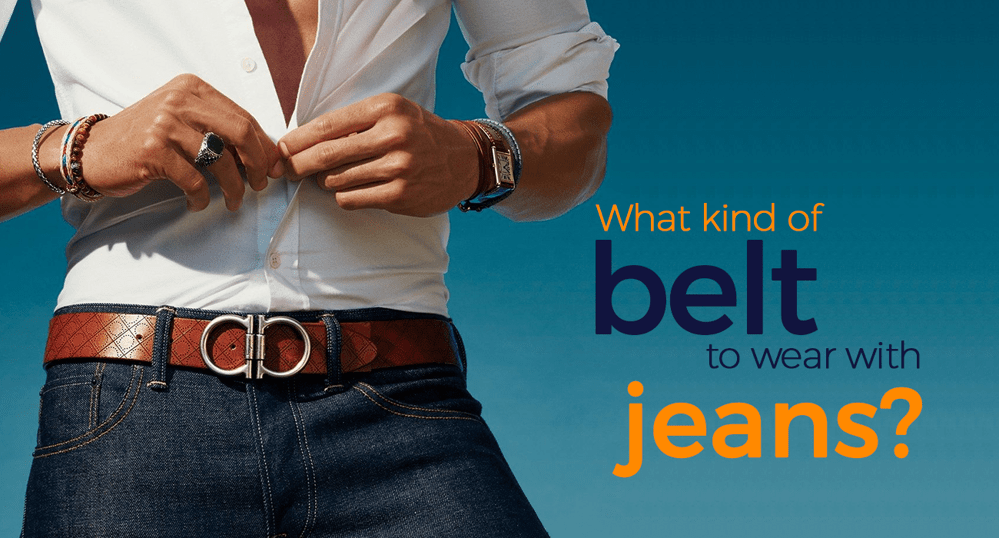
What kind of belt to wear with jeans?
Belts are worn for both practical and fashionable reasons. They can seem to be a minor detail, but they can have a significant effect on the impression you create. They can either be a piece that brings an outfit together or a diversion that detracts from the overall effect.
Unfortunately, many men have no idea what a belt is other than that it goes around their waist.
So today we'll discuss when to wear one, the various styles, when to prefer one over the other, and how to find a high-quality belt that suits you properly.
This is a complete guide to belts for men.
What Is the Purpose of a Belt?
Let's begin by describing what we're discussing.
A belt is a tension-based cinching mechanism that goes around the waist to keep a person's pants in place. Even a strand of string can be used as a belt!
A belt may be used to transport objects. Consider Batman's utility belt or a gentleman who opts for concealed carry.
The majority of belts, on the other hand, are strictly decorative.
It's that simple. Let's start delving into the specifics of belts now.
Is It Better to Wear A Formal or A Casual Belt?
Dress belts and casual belts exist in the same way that shoes do, but there is some variation between the two models. Dress belts are meant to be worn with suits and other formal clothing. Casual belts look great with anything from jeans to shorts.
Men's Top 3 Favorite Belts
Dress belts are appropriate for both business and evening wear.
11.5-inch wide harness
It's just 0.1 inches wide.
Brown or black leather
Typically, gleaming
Unfinished – a little bragging or hand burnishing would be good.
Normally, frame-style buckles are small, simple, and polished.
Leathers and metals should be matched.
For jeans, a casual belt
1.5 inch or wider strap
It may be thicker than a dress belt.
Natural or tanned leather
Rugged, matte finish that can be braided, textured, or painted
Plate, case, or frame buckles may have a larger and/or more decorative buckle.
It's not necessary to fit the leathers exactly (e.g. brown with tan, tan with white)
A Belt's Anatomy
The buckle and the strap are the two main components of most belts (once you've progressed past the basic string).
A keeper loop and/or an end tip are common features on belts (the end tip is usually metal or leather on cloth belts). The end tip protects the belt's end from damage/fraying while also making it easier to buckle. The keeper loop prevents the free end of the belt from flapping about after it has been buckled.
The strap and buckle on some belts are permanently attached; on others, they can be separated and the buckle replaced. The chap is the part of the buckle that connects it to the harness.
When Is It Appropriate to Wear a Belt?
In general, all pants with belt loops (including jeans) should be worn with a belt. That's why there are loops! It can appear messy if you leave it off. Belts are especially important for formal outfits, where your shirt is almost always tucked in. You may get away with not wearing a belt with more casual outfits when your shirt is untucked, but you might lack its functionality; note, belts aren't just for decoration; they help hold your pants up!
Suspenders are a fashionable and enjoyable alternative to a belt for maintaining this purpose in the absence of a belt. Suspenders are a perfect way for bigger men to look put together.


